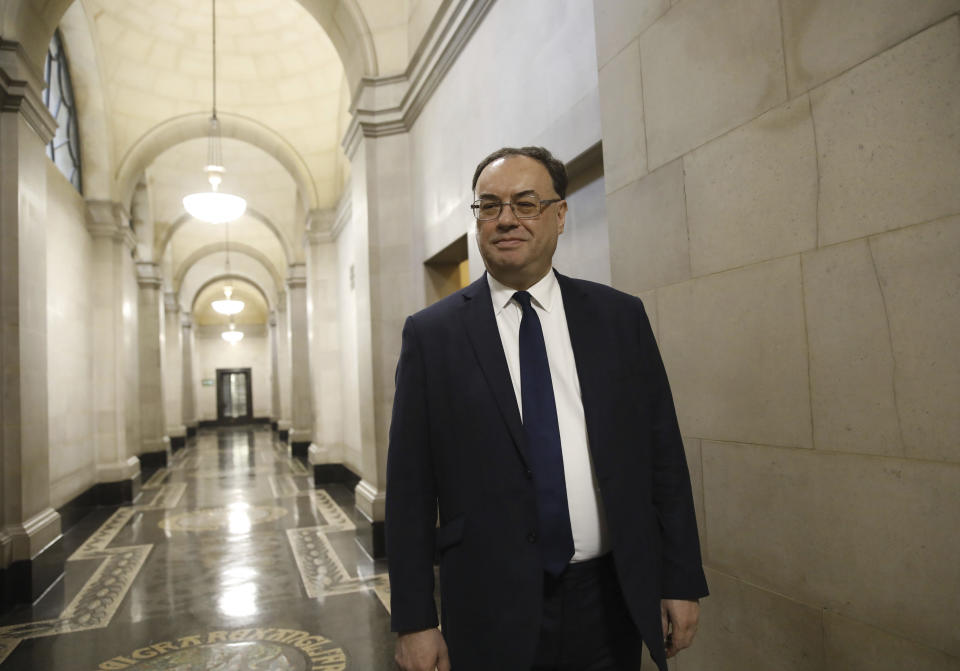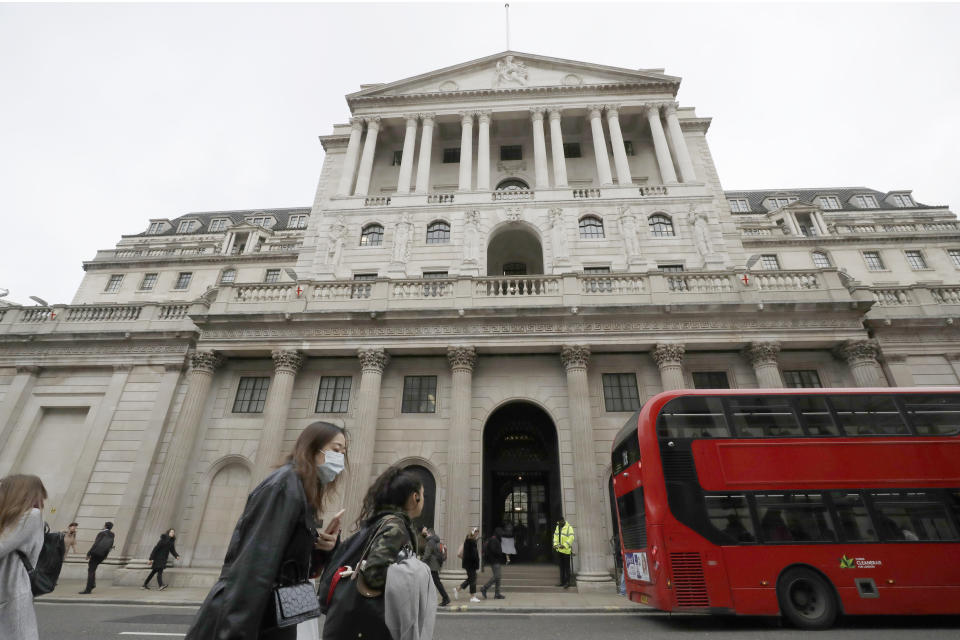Bank of England stokes negative interest rate speculation

Speculation is mounting that the Bank of England could take interest rates into negative territory for the first time in history next year if the UK economy weakens further.
The Bank’s Monetary Policy Committee (MPC) left the headline interest rate unchanged at its record-low of 0.1% on Thursday and maintained its outlook for the UK broadly unchanged from August’s meeting.
While there were few surprises in the main announcement, investors and analysts zeroed in on a few lines within the MPC meeting minutes, showing negative interest rate policies were being prepared.
READ MORE: Bank of England: COVID-19 and furlough end could derail economy
The MPC minutes said the committee “discussed its policy toolkit, and the effectiveness of negative policy rates in particular.” The minutes also revealed the Bank of England plans to “explore how a negative Bank Rate could be implemented effectively” and will hold formal talks to consider the operational aspects of the policy in the final few months of this year.
“The big news in today was on negative rates,” Sanjay Raja, economist at Deutsche Bank, said.
“The MPC surprised many by noting that the Bank will begin formal talks with financial institutions on the operational difficulties surrounding negative rates later this year, should they be warranted down the line.”
Watch: What are negative interest rates and why we might be getting them in the UK?
READ MORE: Bank of England issues warning on challenges of negative interest rates
Nomura’s chief UK economist George Buckley said the negative rate comments were a “curve ball”, while Robert Wood, Bank of America’s chief UK economist, said the Bank of England appeared “more prepared to use negative rates than we thought.”
The pound sank against the dollar and euro after the MPC statement, with analysts blaming the negative interest rate disclosures.
The UK interest rate was cut to 0.1% in March, giving policy makers little headroom for further conventional rates-based stimulus. Rate setters at Threadneedle Street stoked speculation about negative interest rates earlier in the year with public comments, but notes of subsequent MPC meetings showed the policy was not being actively considered.
Governor Andrew Bailey said at the start of this month that negative interest rates were “in the box of tools” but said Threadneedle Street had “no plans to use it imminently.”
“Governor Andrew Bailey was dismissive of the chances of negative rates just last month,” Wood said. “So publishing this paragraph feels like news.”

READ MORE: Bank of England governor hints at negative interest rates
Negative interest rates are a non-conventional way of trying to stimulate economic growth. By making banks pay to store funds with the central bank, negative interest rates are meant to encourage financial institutions to lend money in a bid to juice growth.
Unheard of a decade ago, negative rates were widely pursued across Europe in the wake of the 2008 financial crash. The deposit rate at the European Central Bank remains negative.
Critics say the policy is largely unproven, can create speculative bubbles in things like house prices, and does serious damage to the banking sector by eroding profitability.
“We remain circumspect about how helpful further rate cuts into negative territory would be,” Nomura’s Buckley said.
“After all, will a few basis points of easing to deal with the scale of economic collapse that COVID-19 has brought about really help at more than just the margin, and is it worth it for the operational and profitability issues it could cause in the banking sector?”
READ MORE: Predictions for UK economy stop getting worse — but remain dire
Kit Juckes, a macro strategist at Societe Generale, said introducing negative rates in the UK would be “reckless” given the country’s sizeable current account deficit.
“The UK needs to attract foreign investors, not push them away,” he said.
Buckley said the Bank of England may be “simply covering itself” with its prep work on negative interest rates, rather than planning to actually use them.
However, Bank of America’s Wood said the central bank would “likely be bumping up against negative interest rates for an extended period.”
“They just opened the door further to negative rates not just next year, but for an extended period, potentially triggered by any negative economic shock,” he said.
Markets have been pricing in the possibility of future negative UK interest rates with “near-certainty,” ING’s senior rates strategist Antoine Bouvet said. Thursday’s statement from the Bank of England was “a vindication of market expectations,” he added.
READ MORE: 'Record level' of uncertainty for UK economy, warns Bank of England governor
“Perhaps due to the worsening COVID-19 curve and to looming Brexit risk, the yield curve has already made up its mind about the odds of further easing,” Bouvet and his ING colleague Petr Krpata wrote in a note.
Given that the Bank of England is only beginning it exploratory work on negative rates in the next few months, economists agree that the policy is only likely to be introduced by next Spring at the earliest.
“We think negative rates would only really be viable at the start of 2021,” Deutsche Bank’s Raja said.

 Yahoo Finance
Yahoo Finance 